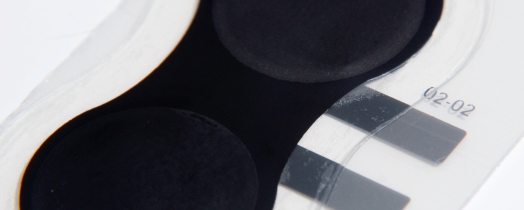Today electronic applications have become ubiquitous and will be found in all areas of our daily life. This requires matching energy sources with high flexibility in regard to thickness, geometrical shape, voltage, capacity and weight. Applying the appropriate functional materials to flexible substrates using mass printing technologies will open new opportunities to integrate e.g. batteries into ductile products.
The printed battery provides a nominal capacity of 2 mAh/cm², a thickness under 1 mm and a customized layout. This joint development of Fraunhofer ENAS, the Department of Digital Printing and Imaging Technology at the Chemnitz University of Technology and printechnologics GmbH (former Menippos GmbH) is a low cost but flexible energy source.
Serial connections of batteries can be printed in one step, thus integer multiple of the nominal voltage of 1.5 V are demonstrated. The battery is based on a zinc manganese dioxid system which is free of mercury, widely used and might be regarded as environmentally friendly. The performance is demonstrated in different applications with LEDs as display elements. By using high efficient printing technologies and well adapted materials and inks, the production yield is expected to be more than 90 per cent.
The printed batteries are especially suited for thin and flexible products in which they can be easily integrated. Appropriate products might be intelligent chip and sensor card, medical patches and plasters for transdermal medication and vital signs monitoring or lab-on-chip analysis systems.
 Fraunhofer Institute for Electronic Nano Systems
Fraunhofer Institute for Electronic Nano Systems